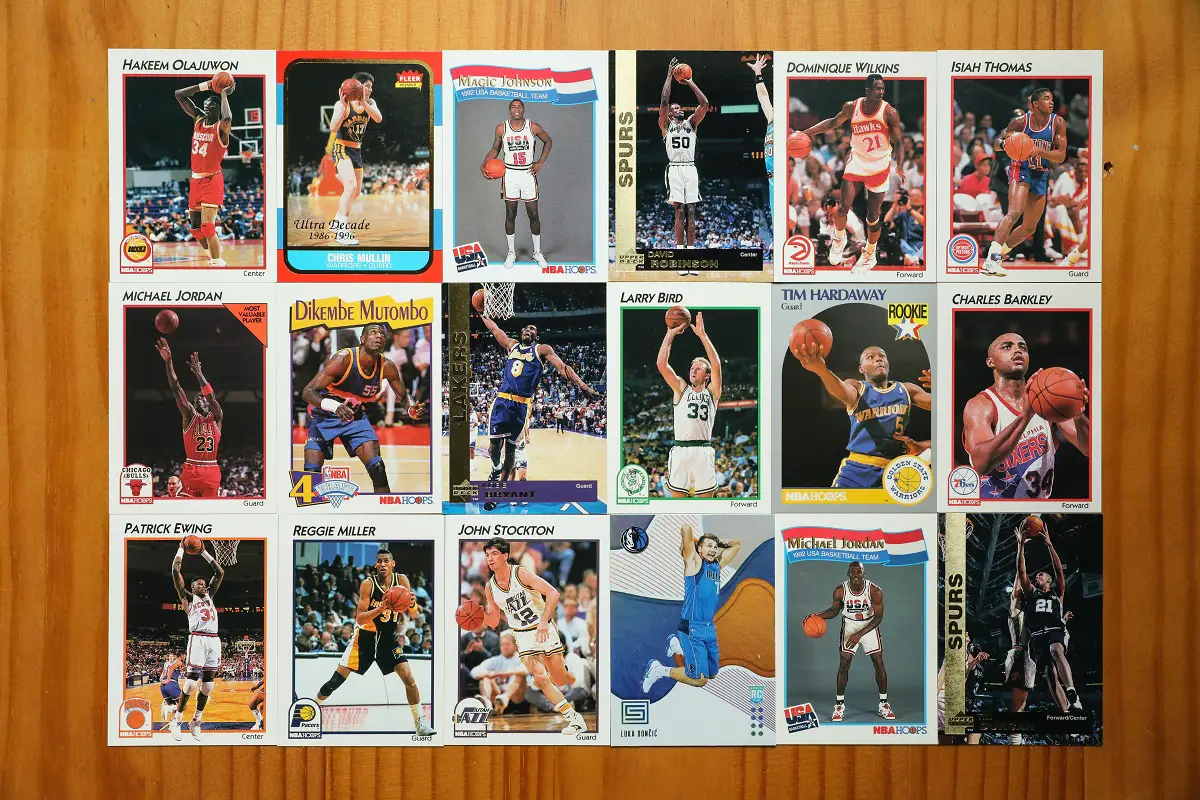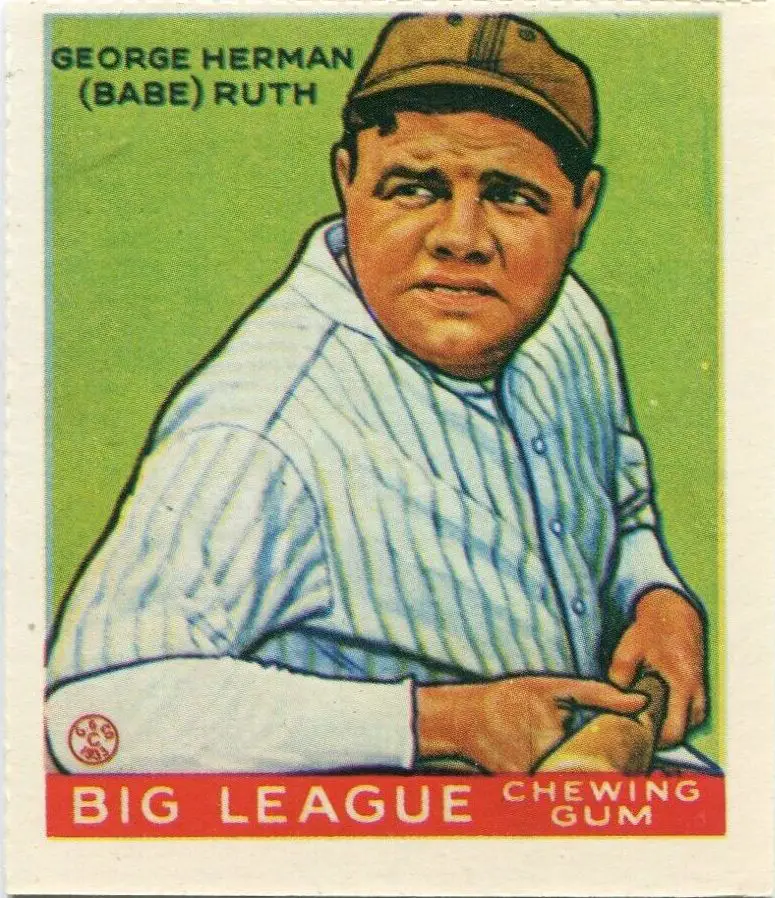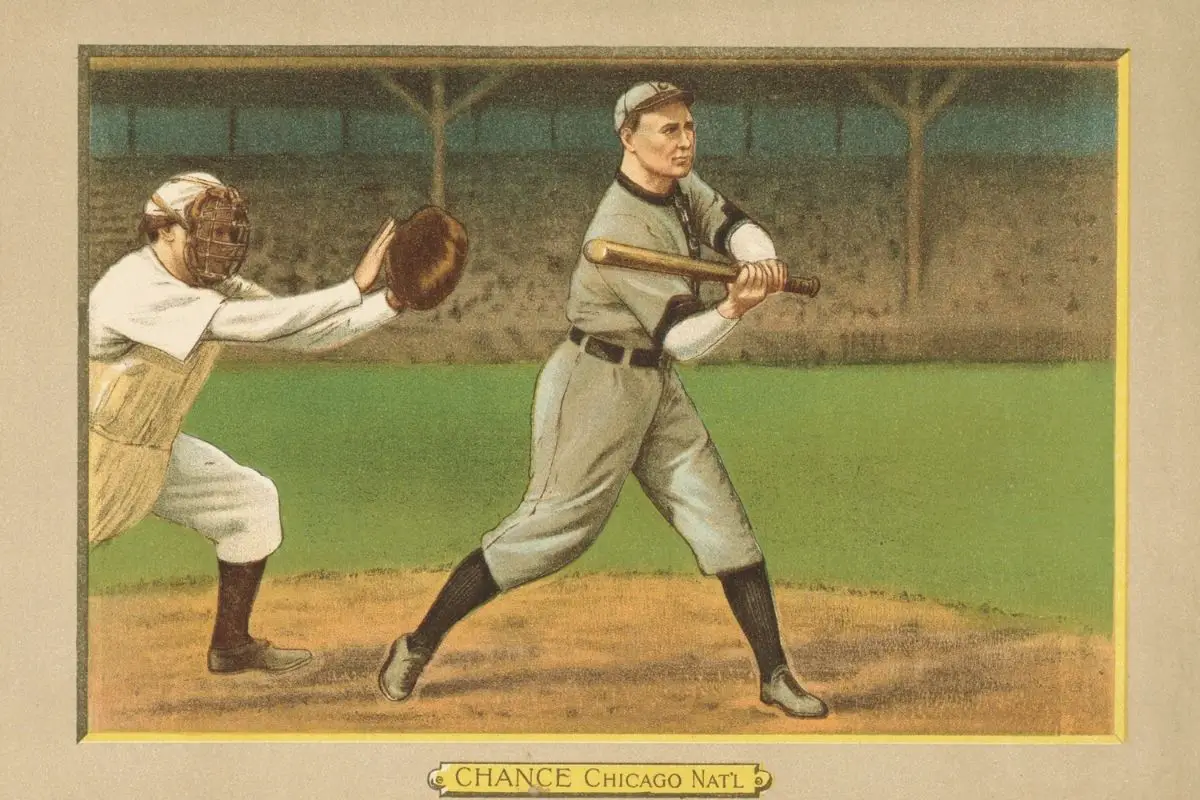Sports trading cards have been a popular collectible for almost two centuries. From baseball to basketball, Topps to Panini, there are countless varieties of cards for every sport imaginable.
Some sports cards are incredibly rare and valuable and are highly prized by collectors, with the rarest cards often selling for thousands (if not millions!) of dollars.

However, for every valuable card there are dozens of cheap fakes used to scam people.
Whether you’re a seasoned sports card aficionado or an amateur collector just getting started, there’s a significant chance you’ve heard the phrase ‘RP’ thrown around – but what does it mean?
In this guide, we’ll take you through everything you need to know about RP sports cards, from what they are to how you can identify them. So let’s get started, shall we?
What Does ‘RP’ Mean?
When it comes to sports cards, ‘RP’ refers to a card being a reprint.
This means that the card wasn’t printed as part of the card’s initial release, and is instead a copy that is trying to pass itself off as one of the originals; in short, it means the card is a fake.
Occasionally, a reprinted card can be used to fill in the spots in a set if a particular card is too rare.
For instance, many cards were part of a limited release and only a limited quantity were ever made, making the original cards far more expensive and hard to find.
However, a significant proportion of reprints are used as part of scams to try and fool the untrained eye. Without knowing what signs to look for, it’s all too easy for amateur collectors to fall for a convincing counterfeit.
How Can You Tell If A Card Is A Reprint?
There are several ways you can determine whether or not a sports card is a reprint.
Cards go through a process called ‘grading’ to assess their value and authenticity, and experts use multiple methods when examining a card to determine whether or not it is genuine.
Older and vintage cards are a bit harder to confirm the authenticity of, but more modern sports cards are printed in a way that makes them far easier for experts to verify; in the same way that counterfeit money can be identified through security checks, so can sports cards.
The easiest way of telling if a card is a reprint is if it’s labeled as such. Many reprinted cards advertise themselves as reprints, either through their sales listing or on the actual card itself.
This is because they have simply been reprinted for collectors looking to complete a set without necessarily wanting to pay thousands of dollars a card.
Another way to tell a counterfeit sports card from the real deal is to compare it with a genuine card. This allows you to look for any discrepancies and mistakes made with the reprint that can identify a fake.
Of course, this does also come with the prerequisite that you already have a real card first, but you can still look for details to compare with a photo of a genuine card.
Using a Card Grading Service
Expert card graders use a variety of techniques to judge a card’s authenticity; these include analyzing the content within the card (eg. serial numbers or player information), examining the colors and quality of the card, and – particularly in the case of more modern cards – checking the lithography of the card.
Lithography is part of the printing process of sports cards, and it leaves some identifiable traits on a genuine card that an expert is able to look for.
Not only is this something that many counterfeiters don’t include on their cards due to the extra work required, but it is also incredibly difficult to replicate the lithography of an authentic card when producing a reprint.
Not everyone’s an expert when it comes to sports cards, however, but there are still plenty of things that you can use common sense for.
Any obvious issues with a card’s appearance, such as typos, mismatched colors, and blatant printing errors are dead giveaways to a fake card.
Listings can also give insight – if a rare card is listed at a price that seems too good to be true, then chances are it is.
How Does RP Affect A Card’s Value?
If you’re even vaguely familiar with sports card collections, you’ll know that rare and limited edition cards can be extremely valuable – in fact, the most expensive sports card in the world sold for over $6.6 million at auction!
However, you’ve probably also guessed that reprinted sports cards are essentially worthless as they are simply a fake duplicate of the real card.
RP cards can be and are still sold, but this is usually part of a scam or simply as a collector’s item if the replicated card is particularly rare or produced in a limited quantity.
Reprints aren’t all bad, though, and they provide a great opportunity for fans of sports cards to get their hands on copies of original cards for a fraction of the price.

Most reprinted cards for sale are clearly labeled as such, and typically only cost $5-10 apiece. This can be great for collectors who want to fill out a card set but don’t have millions of dollars lying around for the real thing.
The problem arises when scammers try to pass their counterfeit cards as authentic in order to trick unaware buyers out of their money.
So while reprinted cards themselves aren’t necessarily bad on their own, you should be wary of how many so-called ‘authentic’ cards for sale are actually reprints.
Final Thoughts
So there you have it – an RP sports card refers to it being a reprint, or fake. Not all reprinted cards are necessarily bad, and many of them are just made for collectors to complete their card sets.
However, many reprinted cards are advertised as the real thing and can be used to trick unaware buyers.
So whether you’re an avid sports card collector or just starting out in this great hobby, keep an eye out for reprint cards – now you know what to look for, you can spot a fake a mile off!
- Bo Jackson Rookie Cards for savvy collectors - March 19, 2023
- Bo Bichette Baseball Rookie Cards - March 11, 2023
- Great Value baseball cards from the 60’s under $500 - March 4, 2023








